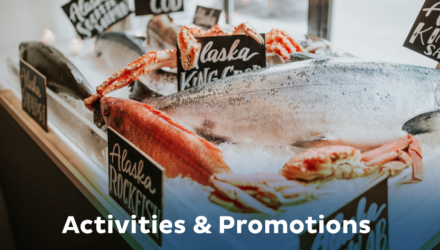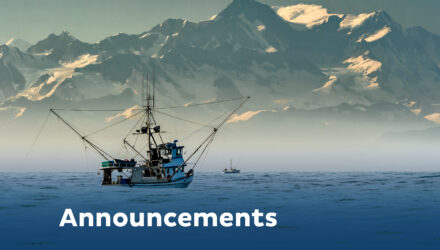FOR RELEASE: ASMI and Barton Seaver Launch To-Go and Takeout Seafood Menu Inspiration for Restaurants


FOR IMMEDIATE RELEASE: May 20, 2020
CONTACT: ASMI – Ashley Heimbigner, 907-465-5562, [email protected]
JUNEAU, Alaska (May 20, 2020) To help restaurants address the quickly changing landscape of foodservice takeout and delivery, Alaska Seafood Marketing Institute (ASMI), in partnership with chef, author and sustainable seafood expert Barton Seaver, created a video series showcasing opportunities to feature seafood to-go.
In this series, Chef Seaver highlights seafood specific strategies, such as menuing chilled seafood dishes and a technique called “green salting” to inspire foodservice outlets with new takeout friendly ways to provide sustainable Alaska seafood to their customers.
“I’m always eager to showcase the versatility of seafood and how it can meet the challenges of any menu format,” said Seaver. “Especially in these unprecedented times it’s more important than ever that we all eat seafood twice a week. I’m pleased to support the efforts of chefs and restaurateurs as they continue to serve our communities by serving delicious, healthy and sustainable foods.”
Beyond takeout menu tips, ASMI and Chef Seaver also completed two short videos on working with Alaska salmon from head to tail , as well as the benefits of working with frozen fresh Alaska seafood in the commercial kitchen . These videos help ASMI build on the value and versatility of the quality species from Alaska.
“We were looking for an opportunity to support the foodservice industry by tapping into the potential for Alaska seafood with methods that work for delivery and takeout,” said Megan Rider, ASMI domestic marketing director. “Chef Barton Seaver is a champion, advocate, and enthusiast for American seafood. It is an honor to have him help tell the Alaska seafood story.”
Helping chefs find success with Alaska seafood is important for both the foodservice and Alaska seafood industries. Alaska Seafood is the No. 1 brand among proteins on U.S. menus, and historically more than two-thirds of domestic seafood is consumed at restaurants.
The videos are available in the Foodservice Training & Education section of ASMI’s website . Chef Seaver also hosts classes via the online platform Rouxbe, where these videos are available for his chef-focused audience.
ASMI is continuously reevaluating the needs of the foodservice industry’s various sectors in these changing times. With uncertainty surrounding supplies of other proteins, chefs may find inspiration in ASMI’s collection of recipes which substitute versatile Alaska seafood species in recipes which traditionally include red meat or poultry.
Following the latest research from Datassential, in combination with input from industry partners and ASMI’s 2019 Menu Alaska research , the organization is developing new chef partnerships, collateral and recipes to help operators meet their consumers’ demands.
About Alaska Seafood Marketing Institute
The Alaska Seafood Marketing Institute (ASMI) is a partnership between the State of Alaska and the Alaska seafood industry promoting the benefits of wild and sustainable Alaska seafood and offering seafood industry education. The seafood industry is Alaska’s largest basic private sector employer with nearly 60 percent of all wild seafood and 90-95 percent of wild salmon harvested in the U.S. coming from Alaska. In addition to wild salmon, Alaska is known for its crab and whitefish varieties such as Pacific cod, sablefish, halibut, Alaska pollock, sole and rockfish – available fresh or frozen year-round. Alaska has been dedicated to sustainable seafood for more than 50 years and is the only state with a constitution that mandates all seafood be managed under the sustained yield principle. Alaska has taken a leadership role in setting the global standard for precautionary resource management to protect fisheries and surrounding habitats for future generations and leading to an ever-replenishing supply of wild seafood for markets worldwide.
###


